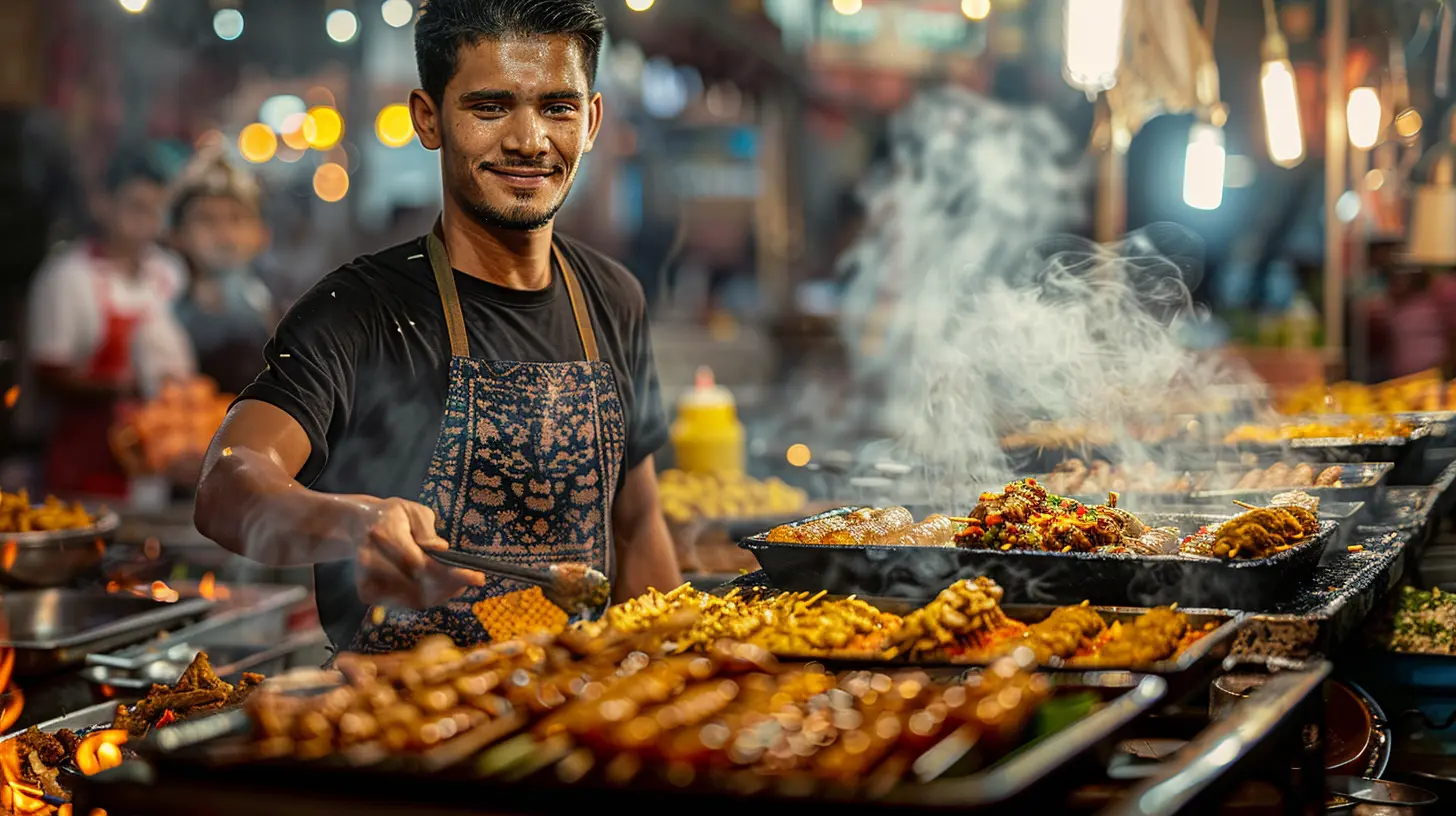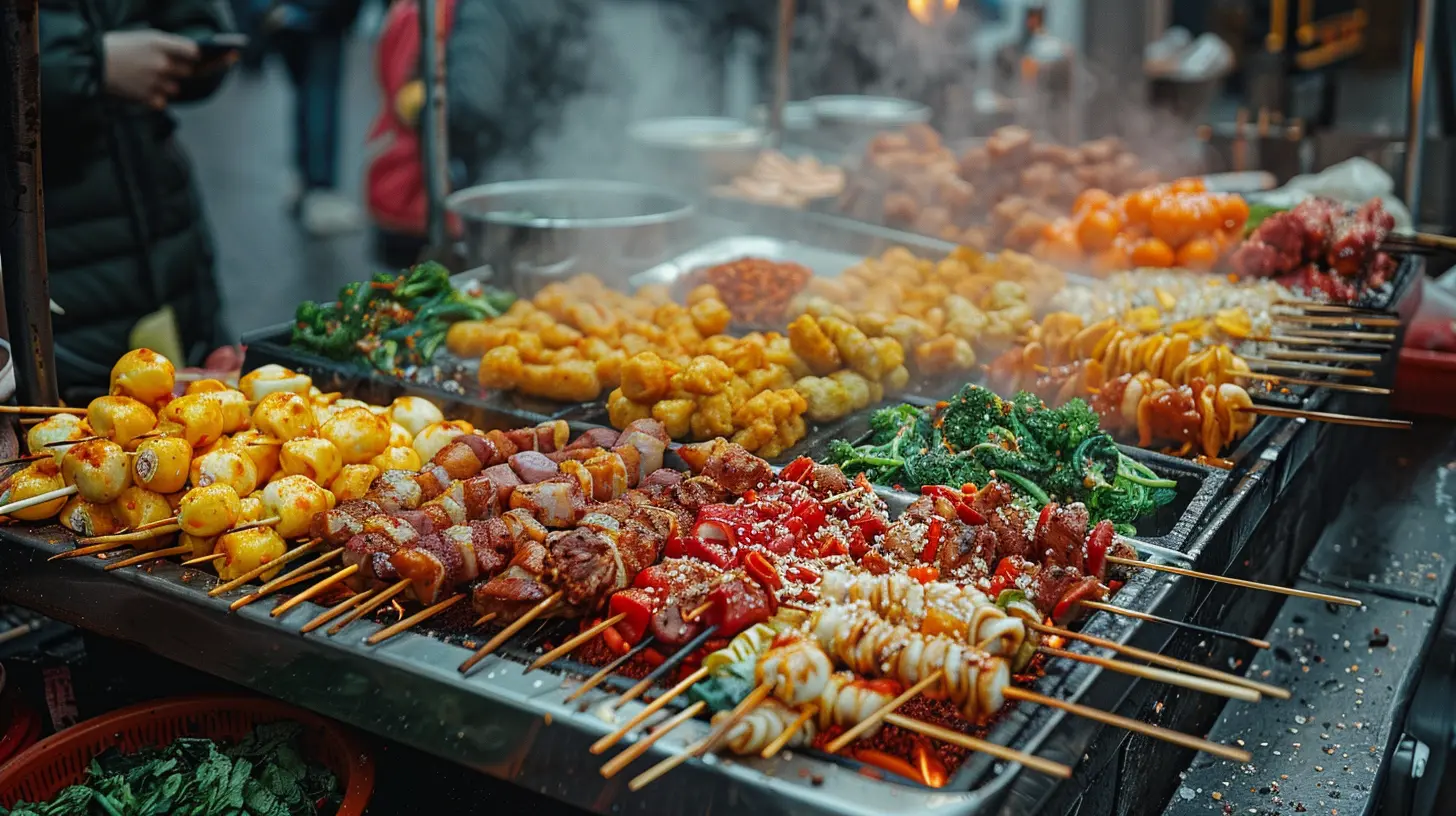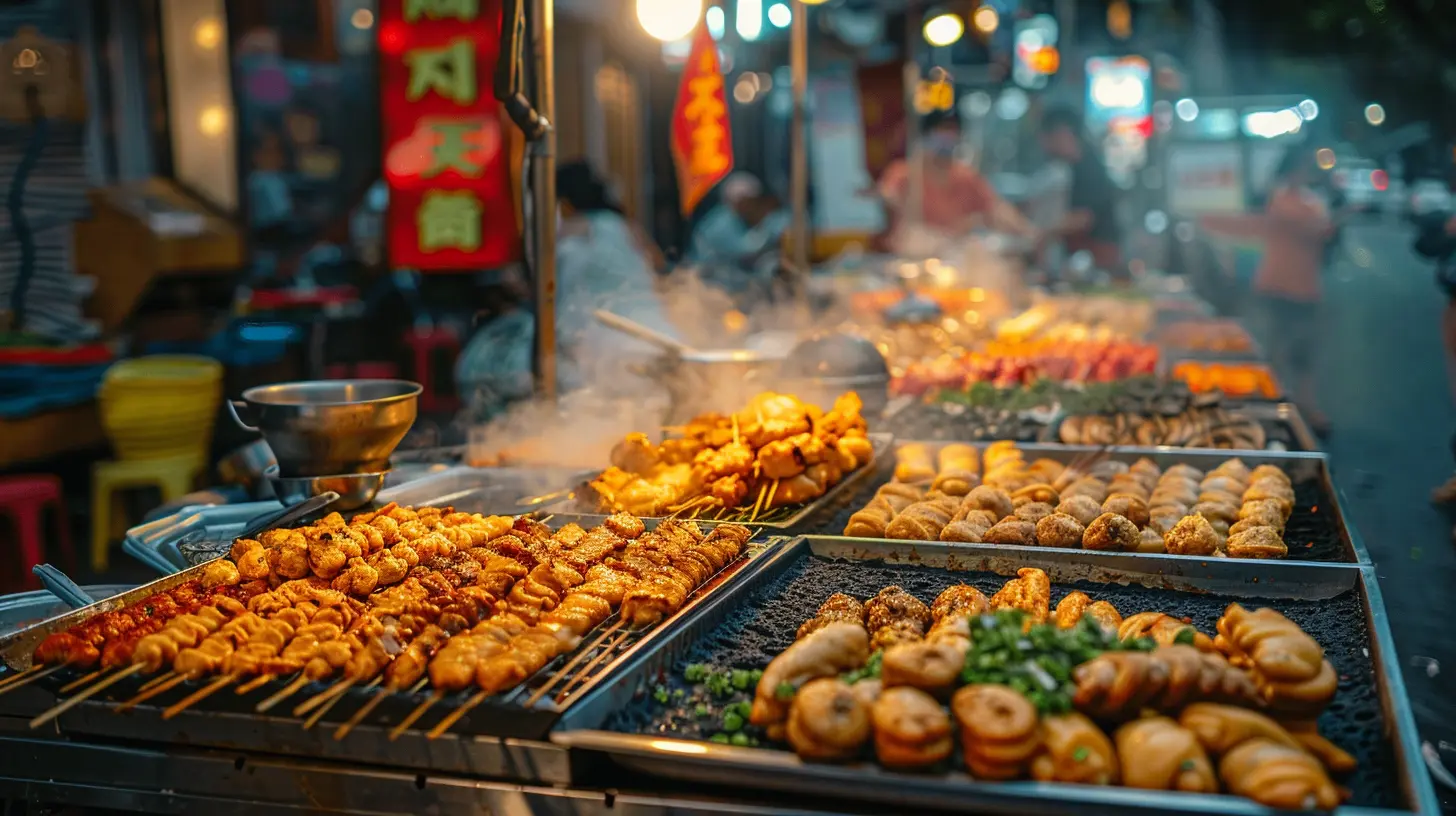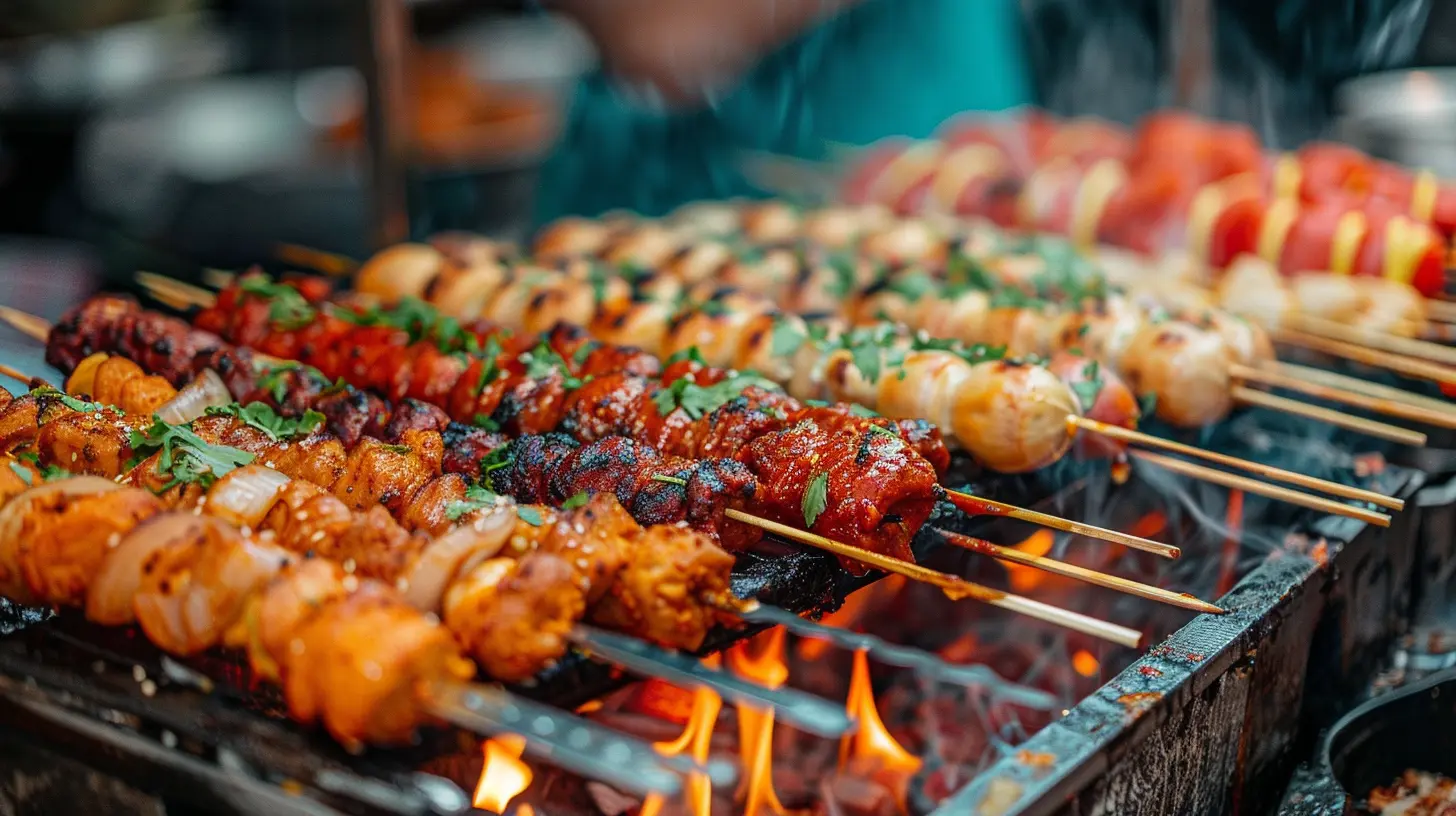Street Food as a Cultural Expression: What It Tells You About a Place
26 May 2025
A Bite of Culture: More Than Just Food
Imagine walking through the bustling streets of Bangkok, the smoky aroma of grilled satay filling the air. Or perhaps you're in Mexico City, where vendors flip sizzling tacos al pastor on a spinning spit. Street food isn't just about satisfying hunger—it's a window into a country's soul.
Every skewer, dumpling, and spice blend tells a story. But what exactly can street food reveal about a place? A lot more than you might think.

The Story Behind Every Bite
Food is memory. It's history. It's survival. Street food, in particular, is the heartbeat of daily life, often rooted in traditions passed down for generations. Unlike fine dining, which often caters to an elite crowd, street food belongs to the people.From the spices used to the method of cooking, every little detail whispers secrets about a country's past, its struggles, and its influences. It’s like a culinary passport—you just need to know how to read it.
1. History Served on a Plate
Want to understand a country’s history? Pay attention to what’s sizzling in the street stalls. Many of the world's most beloved street foods have deep historical roots.- Banh Mi (Vietnam): A perfect blend of French and Vietnamese influences, this crispy baguette sandwich tells the tale of colonialism and adaptation.
- Currywurst (Germany): This post-war invention—sausage drenched in curry ketchup—reflects Germany’s post-WWII resourcefulness and British occupation influences.
- Arepas (Colombia & Venezuela): Made from ground maize, these corn patties trace back to pre-Columbian civilizations, proving indigenous traditions are alive and well.
2. The Influence of Migration and Trade
Food rarely stays in one place. Trade routes and migration patterns have shaped local cuisines for centuries, blending flavors from distant lands into something unique.Take laksa, for example—a spicy noodle soup found in Malaysia, Singapore, and Indonesia. Its roots lie in a mix of Chinese and Malay influences, a direct result of centuries of trade and intermarriage.
Or consider shawarma, a Middle Eastern staple that traveled across continents, morphing into döner kebabs in Turkey and gyros in Greece.
Street food is living proof that cultures aren't static. They evolve, borrowing bits and pieces from travelers, conquerors, and refugees alike.

Flavors Reflect Local Resources
Ever noticed how coastal cities tend to have more seafood snacks on the streets? Or how tropical regions lean heavily on coconuts and bananas? That’s no coincidence.Street food is shaped by what’s available. It thrives on local ingredients, which is why the dishes you find in one country might be impossible to replicate elsewhere.
- Jamaican Jerk Chicken: Bold, spicy, and smoky—this dish is a direct result of the island’s native spices and African-influenced cooking techniques.
- Peruvian Ceviche: Fresh fish "cooked" in citrus, revealing Peru’s incredible seafood supply and indigenous culinary traditions.
- Japanese Takoyaki: These fried octopus balls wouldn’t exist in a landlocked country. The ocean is Japan’s lifeline, and its cuisine reflects that.

A Social Equalizer: Where Status Doesn’t Matter
Unlike fancy restaurants with dress codes and reservations, street food is for everyone. Whether you're a local worker grabbing lunch or a tourist searching for authentic flavors, street food levels the playing field.Some of the best culinary experiences don’t happen in Michelin-starred establishments but rather from a small cart on a busy street corner, where the vendor has been perfecting the same recipe for decades.
It’s food without pretense. No frills, no extravagance—just pure flavor, served with a side of culture.

Rituals and Traditions Wrapped in a Wrapper
Some street foods aren’t just meals—they’re ceremonies.Take tamales, a staple in Latin America. Wrapped in banana leaves or corn husks, they’re often prepared for holidays and special occasions, bringing families together for an hours-long process of stuffing, folding, and steaming.
Or think of paella in Spain. While not always considered street food, its origins lie in communal gatherings, where families and friends cooked giant pans of rice over an open fire.
Many street foods hold a deep cultural significance, marking celebrations, religious practices, or even political movements.
The Unwritten Rules of Street Food Culture
Every country has its own street food etiquette. Understanding these unspoken rules can make your experience more authentic (and save you from embarrassing mistakes).- In Japan: Eating while walking is often frowned upon. Many people stand near the food stall to finish their meal before moving on.
- In India: Your hands are your best utensils, but always use your right hand for eating.
- In Thailand: Don’t be surprised if your dish is served with a spoon instead of chopsticks. Thai street food is designed to be eaten efficiently!
The Future of Street Food: Tradition Meets Innovation
While many street foods have centuries of history, they’re not stuck in the past. Vendors continuously innovate, mixing traditional flavors with modern twists.- Korean Fusion Tacos (Los Angeles): A blend of Mexican and Korean tastes, these tacos are proof that food knows no borders.
- Cronuts (New York): A croissant-doughnut hybrid that took the world by storm, showing how street food can become a viral sensation.
- Beyond Meat Street Burgers (Worldwide): Plant-based alternatives are making their way into street food culture, adapting to modern dietary preferences.
Street food is always evolving, ensuring that while tradition remains, creativity keeps the experience fresh.
Why You Should Always Try Street Food
Still hesitant? Worried about hygiene? While caution is understandable, skipping street food means missing out on an essential part of a country’s identity.Street food is often cooked fresh right in front of you, meaning you can see exactly what’s going into your meal. Plus, locals tend to know the best (and cleanest) spots—just follow the crowds, and you’re golden.
If you want to truly understand a place, don’t just visit its landmarks. Taste it. Savor it. Let each bite tell you a story.
After all, street food isn’t just food—it’s an experience, a history lesson, and a cultural bridge all rolled into one delicious mouthful.
all images in this post were generated using AI tools
Category:
Street FoodAuthor:

Reed McFadden
Discussion
rate this article
3 comments
Julianne Mason
Street food is a delicious gateway to a culture's heart, revealing its history, traditions, and community spirit. Embrace each bite as a unique story, and let your taste buds embark on a flavorful journey!
June 15, 2025 at 3:49 PM

Reed McFadden
Absolutely! Street food truly encapsulates the essence of a culture, offering a rich narrative through flavors and ingredients that connect us to the heritage and spirit of a place.
Troy Gill
Street food reveals local traditions, ingredients, and community values, enriching cultural understanding through cuisine.
June 2, 2025 at 3:58 AM

Reed McFadden
Absolutely! Street food serves as a vibrant reflection of local culture, showcasing unique ingredients and traditions that foster a deeper appreciation for community values.
Annette Scott
Street food: where culture meets cravings—unforgettable bites and messy hands!
May 27, 2025 at 4:27 PM

Reed McFadden
Absolutely! Street food encapsulates local flavors, traditions, and stories, making each bite a unique cultural experience.



